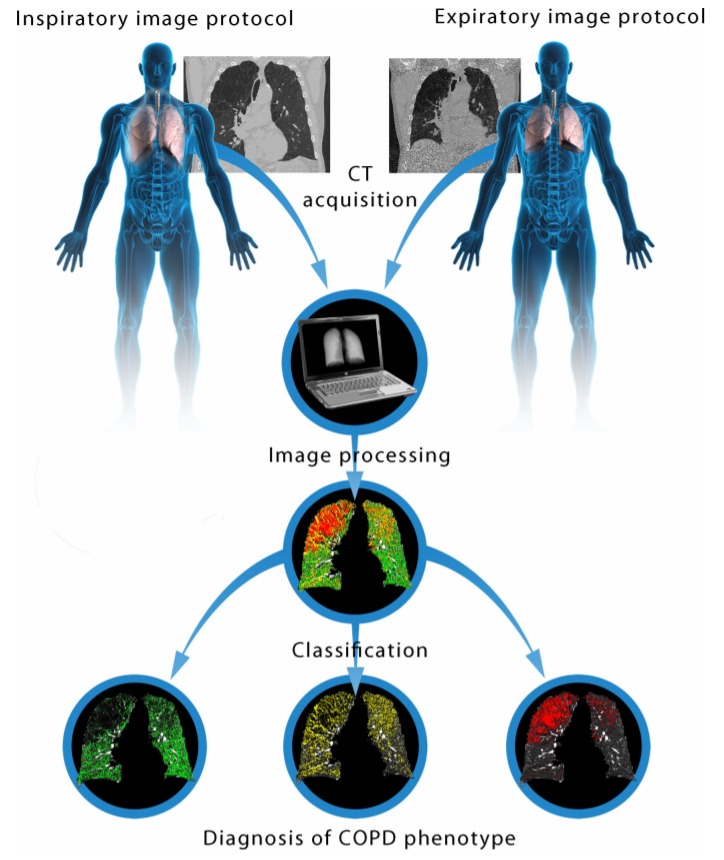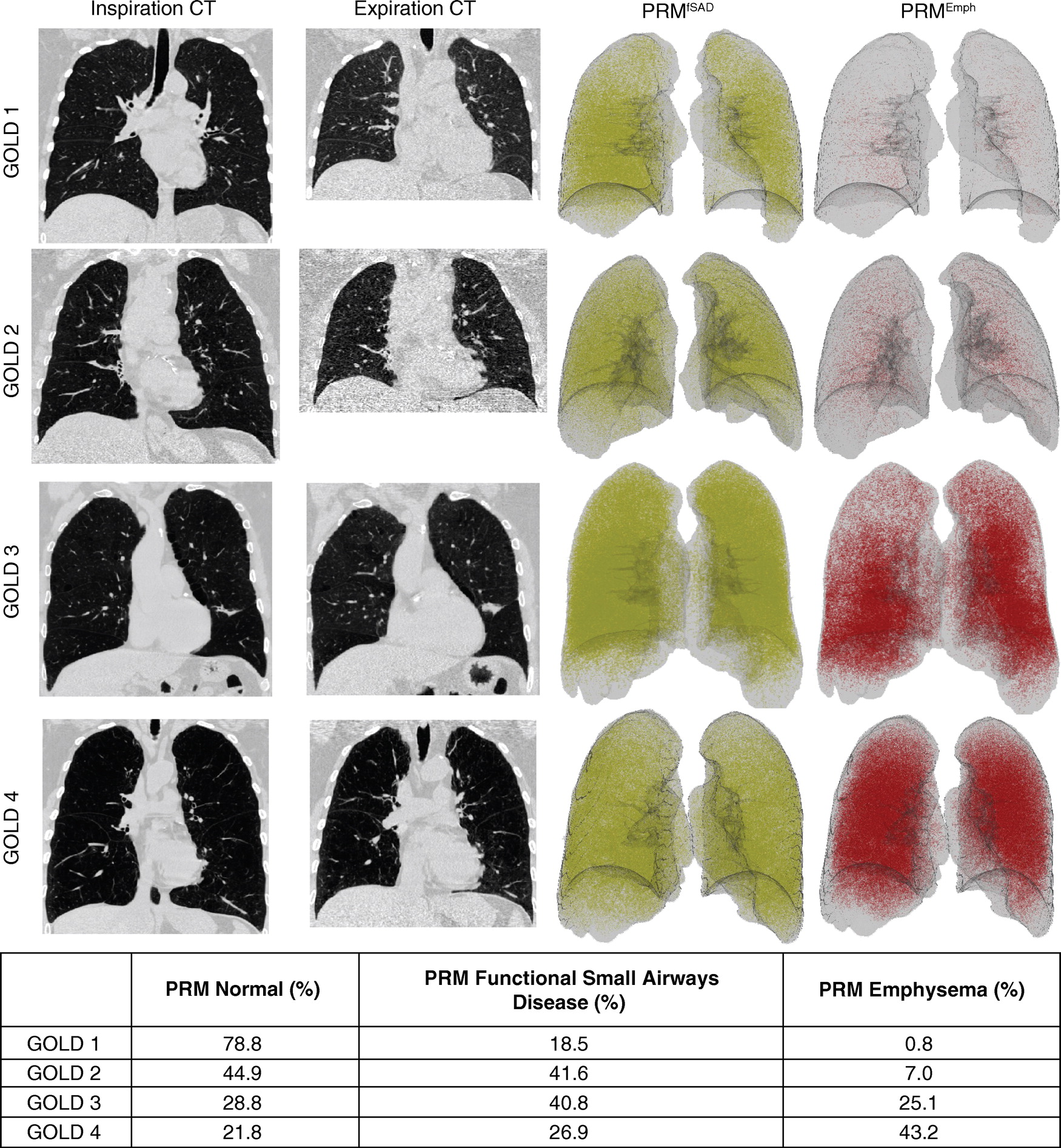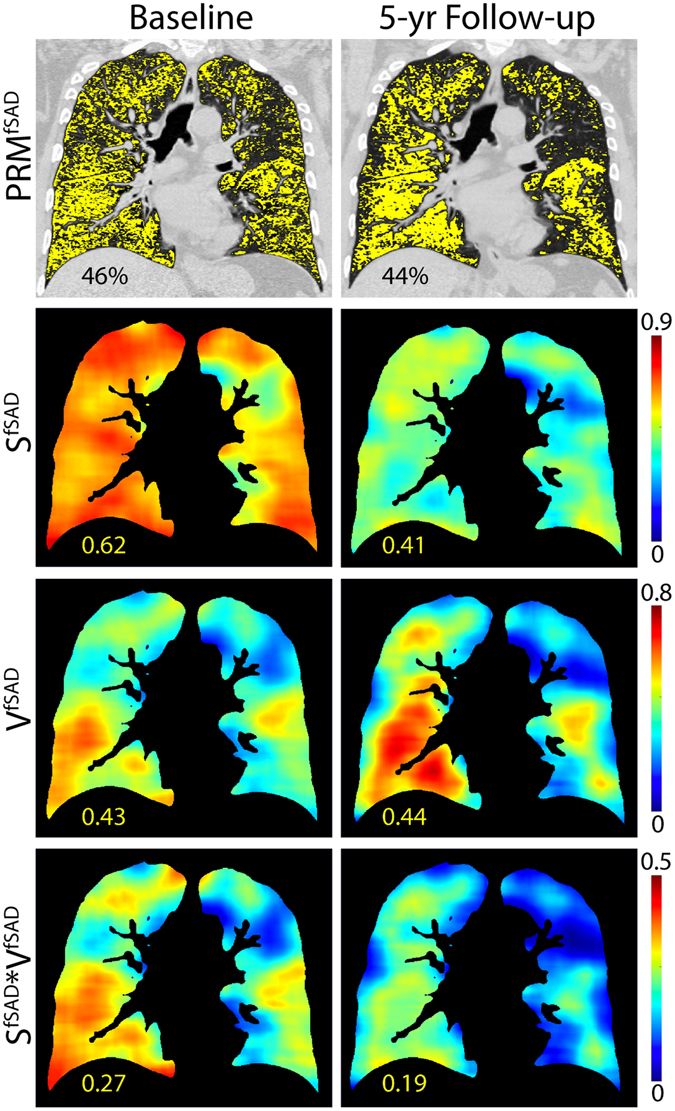Computed Tomography–Based Biomarker Provides Unique Signature For Diagnosis Of COPD Phenotypes And Disease Progression
Chronic obstructive pulmonary disease (COPD) is increasingly being recognized as a highly heterogeneous disorder, composed of varying pathobiology. Accurate detection of COPD subtypes by image biomarkers is urgently needed to enable individualized treatment, thus improving patient outcome. We adapted the parametric response map (PRM), a voxel-wise image analysis technique, for assessing COPD phenotype. We analyzed whole-lung computed tomography (CT) scans acquired at inspiration and expiration of 194 individuals with COPD from the COPDGene study. PRM identified the extent of functional small airways disease (fSAD) and emphysema as well as provided CT-based evidence that supports the concept that fSAD precedes emphysema with increasing COPD severity. PRM is a versatile imaging biomarker capable of diagnosing disease extent and phenotype while providing detailed spatial information of disease distribution and location. PRM's ability to differentiate between specific COPD phenotypes will allow for more accurate diagnosis of individual patients, complementing standard clinical techniques.
Read Our Paper

